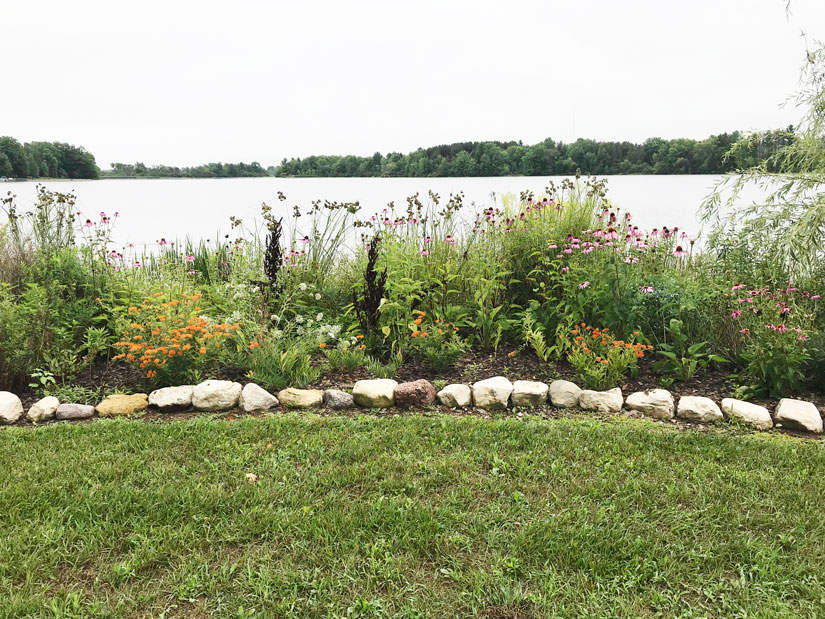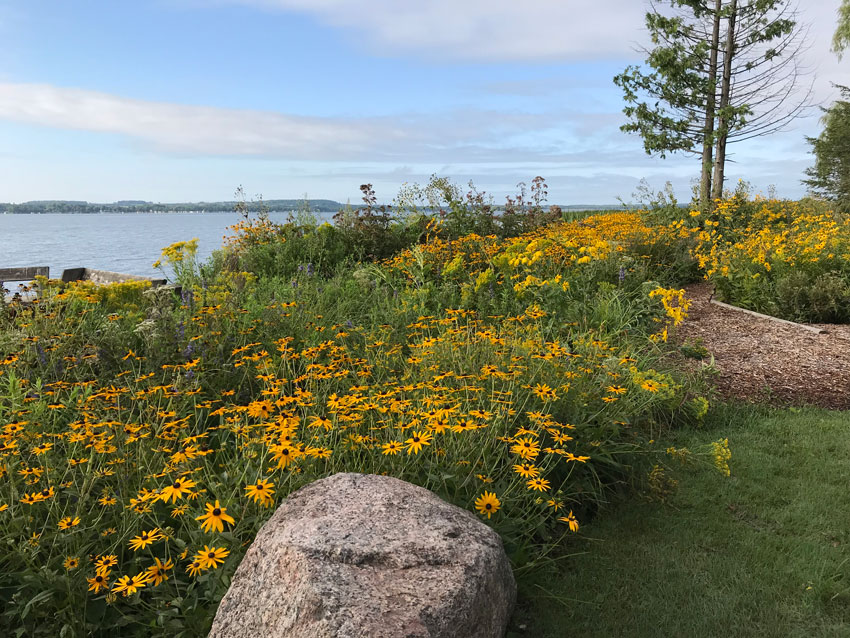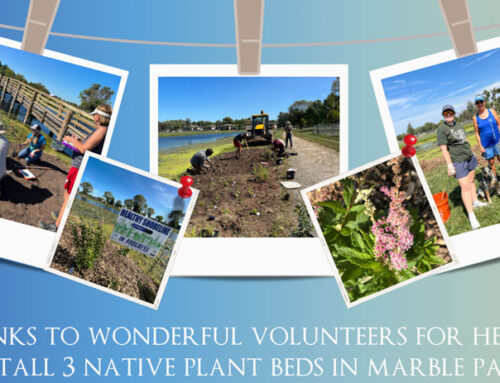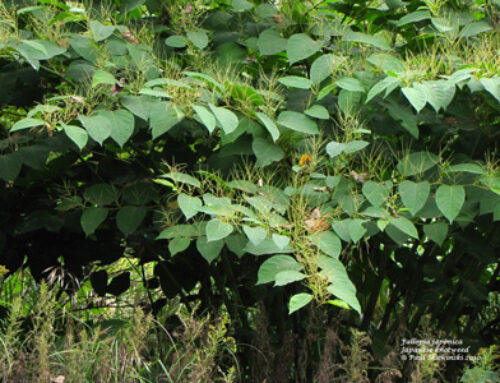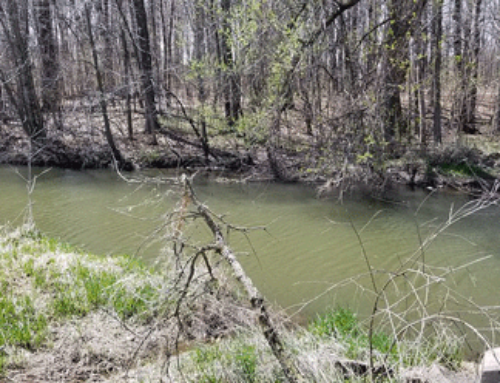Shawano Area Waterways Management is working with the Department of Natural Resources, Shawano County, WAMSCO, and Connecting Our Waters in an effort to add rain gardens and native plants to property owner’s shorelines.
The Shawano Lake Shoreline Survey was completed in July 2019 and the results showed that there were over 6 miles of seawall around the shoreline of Shawano Lake. It was also found that 71% of the properties around Shawano Lake contain some level of impervious surface within the riparian zone.
In an effort to combat run-off related issues and loss of habitat caused by the presence of impervious surfaces, Shawano Area Waterways Management is looking to apply for a Healthy Lakes Grant on behalf of the residents around Shawano Lake. More information can be found here: https://www.healthylakeswi.com. To be included in this grant application, please contact shawanolakewi@gmail.com by January 15, 2020.
The Healthy Lakes grant will cover up to $1000 of the cost of a shoreline project or rain garden. These funds can be used in conjunction with funds offered by Shawano County. Shawano County provides 50% cost share up to $2500 for shoreline restoration projects as well as rain gardens. Projects, on average, cost about $2.80/sqft.
Residents will need to keep these projects in place for a minimum of 10 years to comply with funding rules. Guidance for these projects can be provided through various resources around Shawano County.
Please consider improving the water quality around you for generations to come.
Tim Day from SAWM put together this excellent FAQ for members
SHORELINE RESTORATION GRANT OPPORTUNITIES!!
As waterfront property owners all of us are concerned about the water quality of Shawano Lake, the channel, and the Wolf River. One of the most important things we can do to positively impact water quality is control the runoff from our property into these waterways. Unfiltered water that runs directly into the waterways, especially from impervious surfaces such as roofs and driveways, carries unwanted pollutants and nutrients, especially phosphorous, into our waterways. These nutrients act as a fertilizer that contributes to the growth of aquatic plants and, in the worst case, blue-green algae blooms. They can also be very harmful to fish and other aquatic life. Fortunately, there is a simple, effective and natural way to control runoff and improve our water quality – shoreline plantings of native plants.
Why native plants?
Native plants, which includes wildflowers, grasses, shrubs, and trees, are best suited to survive in our environment and provide a wonderful habitat for pollinators and other wildlife habitat. Their root systems are much deeper than a grass lawn (grass roots extend less than two inches into the ground) and therefore act as a natural filter when runoff from rain events drains towards the lake. Besides the aesthetics of a native planting, vegetation along the shoreline also creates a biological barrier to deter Canada Geese from coming up to the land (and leaving behind those nasty reminders that they were there!).
How do I create a shoreline planting of native plants?
Because Shawano County and Healthy Lakes (a collaborative effort of the WDNR and Wisconsin Lakes Partnership, UW – Extension Lakes Program) encourage shoreline plantings they have compiled a lot of information on this topic, including lists of different types of wildflowers, grasses, shrubs and trees suitable to varying sun exposure and soil types, as well as local nurseries that provide these plants. Healthy Lakes has a website at www.healthylakeswi.com that provides a wealth of information on this topic. There are also consultants available to help with the design and installation of a shoreline planting if desired.
Are there other things I can do to improve water quality besides shoreline plantings?
Capturing the rain from downspouts in a rain barrel is a simple, inexpensive and effective way to reduce runoff. Using water from the rain barrel for irrigation also reduces water consumption.
Another effective practice is the installation of a rain garden. Rain gardens are landscaped areas formed from a hollow depression that are planted with native perennial plants. The depression captures stormwater and allows it to slowly infiltrate onsite while absorbing pollutants and sediment. Rain gardens actively manage stormwater on a landowner’s property from impervious surfaces such as concrete and building roofs.
How much does it cost to create a shoreline planting or rain garden?
The cost will depend on the size of the planting or rain garden, what type of plants are selected, and how much of the planning and installation you want do yourself versus having it done for you. Recent projects in our area have ranged in cost between $1.30 and $5.90 per square foot, with an average cost of around $2.80 per square foot. Fortunately, both Shawano County and the DNR have funding available to cost-share on these types of projects. Information on the programs available is as follows:
Shawano County Shoreline Restoration Program
Property owners who participate voluntarily will be eligible for a 50% cost-share rate up to a maximum of $2,500 of cost-share per property. Landowners must enter into a cost-share agreement with the Shawano County Land Conservation Department. Cost-shared projects are required to be maintained for at least 10 years once the project is installed.
Healthy Lakes
Healthy Lakes grants are provided to organizations such as lake associations for distribution to individual property owners. In our case, SAWM can apply for a grant on behalf of its members. Eligible projects of property owners can receive pass-through grants of up to $1,000 per project. Eligible projects include shoreline plantings and rain gardens of at least 350 square feet. Shoreline planting must have at least 10 feet contiguous to the shoreline. The plantings must remain in place for 10 years if funded through a healthy lakes grant.
How do I apply for funding assistance?
If you are interested in obtaining funds from the Shawano County Shoreline Restoration Program, contact Scott Frank, Conservationist, Shawano County Land Conservation Department, 715-526-4632, Scott.Frank@co.shawano.wi.us. Scott is a good friend of SAWM and will help you through the process. Funding can be applied for at any time of the year.
If you are interested in obtaining a Healthy Lakes grant, email SAWM at shawanolakewi@gmail.com no later than January 15, 2020. Put Healthy Lakes in the subject line and indicate whether you are interested in installing a shoreline planting, rain garden or both. SAWM will apply for the grant on behalf of all of the property owners interested. This grant deadline is February 1, 2020, so it is important that you contact us by January 15 in order to be included.
What other resources are available?
We are very fortunate to have Emily Henrigillis, Watershed Coordinator with Connecting Our Waters, Fox-Wolf Watershed Alliance, available to help you with your project. Emily can meet with you to help come up with a plan, contact consultants, select plants, and answer questions. She is very knowledgeable and anxious to help you get started on your project, so take advantage of this resource! Contact Emily at Emily@fwwa.org.
Another resource is the local Wolf River Chapter of Wild Ones. They coordinate native plant sales in the Spring and Fall and they also have members that are very knowledgeable on this topic.
If there is a local contractor you would prefer to work with they can contact Brenda Nordin, Lake Biologist with the WDNR, for more information on the Healthy Lakes program. Brenda can be contacted at Brenda.Nordin@wi.gov.
While summer and blooming plants seem a long way off, now is the time to start thinking about and planning for your shoreline planting and/or rain garden, especially if you want to be considered for a Healthy Lakes grant. Also, consider this: Many Shawano Lake properties have seawalls, and shoreline plantings are especially effective when planted landward along a seawall. Rather that water running over the seawall a shoreline planting will effectively capture and filter runoff before it reaches the lake. The seawall will protect your plantings from shoreline shoves caused by the winter ice so properties with seawalls are ideal candidates for shoreline plantings. It’s a great way to do your part to preserve and protect the Shawano Waterways!

